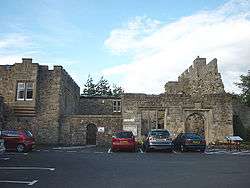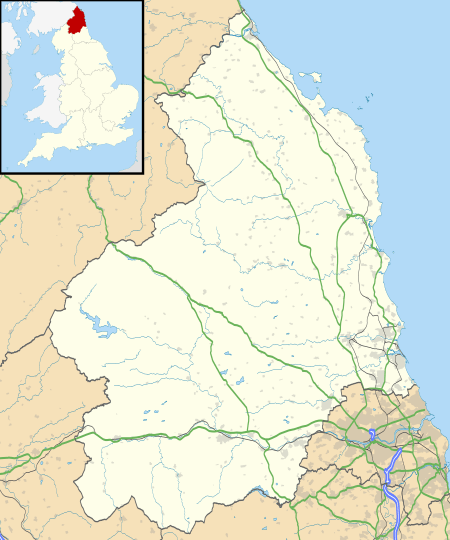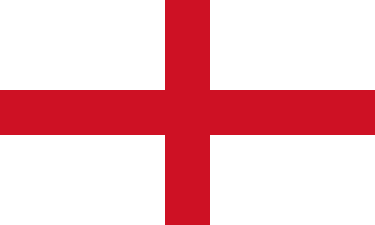Blenkinsopp Castle
Blenkinsopp Castle is a fire-damaged, partly demolished 19th-century country mansion, incorporating the ruinous remains of a 14th-century tower house, which is located above the Tipalt Burn approximately one mile south of Greenhead, Northumberland, England. It is a Grade I listed building and a Scheduled Ancient Monument.
| Blenkinsopp Castle | |
|---|---|
| Northumberland, England | |
 Car park and ruins, Blenkinsopp Castle | |
 Blenkinsopp Castle Location in Northumberland | |
| Coordinates | 54.974°N 2.525°W |
| Grid reference | NY665645 |
Etymology
Blenkinsopp seems clearly to originate in the early medieval Cumbric language, probably as blaen 'top' + kein 'back, ridge' (thus 'top of the ridge'). To this was later added the Old English element hōp 'valley'.[1][2]
History
The ancient manor of Blenkinsopp was held by the eponymous Blenkinsopp family from the 13th century, and they created a substantial tower house. A licence to crenellate the house was granted on 6 May 1340.
An early account by Wallis, writing prior to 1769 and quoted by Rev. J. F. Hodgson, found:
the west and north-west side of it protected by a very high cespititious[note 1] wall and a deep foss – a vault going through it, north and south, 33[note 2] feet in length, and in breadth 18½ feet: two lesser ones on the north side. The facing on the western wall has been down beyond the memory of any person yet living.
A survey of 1541 reported the roof to be in decay and the tower not to be in good repair. The family, whilst retaining ownership, granted possession to the Earl of Northumberland, and abandoned the castle for their other nearby properties to the east at Bellister Castle and Blenkinsop Hall.
In 1727, the heiress Jane Blenkinsopp married William Coulson of Jesmond. By 1832, the property was in disuse, and a mine agent's house was built adjoining the ruinous structure, probably by the architect John Dobson. In about 1877, William Lisle Blenkinsopp Coulson carried out a major restoration project which created a large mansion house on the site. Shortly after these works, the Coulsons sold all their Blenkinsopp estates to Edward Joicey.[3]
In the 20th century, the mansion served as a hotel, but major damage was caused in 1954 by a fire, and large parts of the property were demolished on safety grounds.[4]
Today it is part home and part ruin.
Notes
- 'Cespititious' in the above quote means 'turfy' or 'grass-covered', from the Latin 'caespes' meaning 'turf'.
- Hodgson copying corrects this to 53
References
- Fox, Bethany (May 2007). "The P-Celtic Place-Names of North-East England and South-East Scotland". A Journal of Early Medieval Northwestern Europe. 10.
- Fox, Bethany (May 2007). "The P-Celtic Place-Names of North-East England and South-East Scotland (Appendix)". A Journal of Early Medieval Northwestern Europe. 10.
- "Blenkinsopp Castle". The Gatehouse. 26 July 2017. Retrieved 30 September 2019.
- Ross, David. "Blenkinsopp Castle: History, Travel, and accommodation information". Britain Express. Retrieved 2020-08-03.
- Historic England. "Blenkinsop Castle (1370313)". National Heritage List for England. Retrieved 29 October 2019.
- Ryder, P. F., Blenkinsop Castle, Napper Collerton Partnership, May 1986
- Hodgson, John, A History of Northumberland, Part 2, Volume 3, (1840), pp. 129–132
- Fry, Plantagenet Somerset, The David & Charles Book of Castles, David & Charles, 1980. ISBN 0-7153-7976-3
- Structures in the North East
